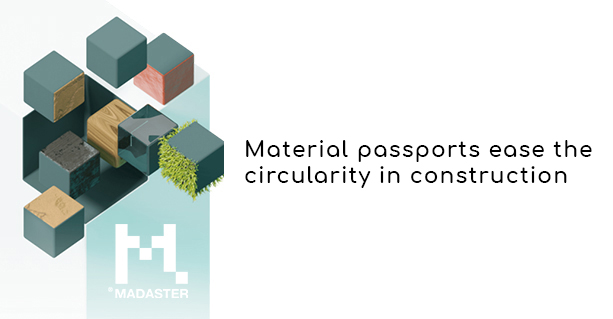What is the value proposition of Madaster?
By offering data insight tools and shared data, Madaster enables the asset owner and construction service providers to take better decisions towards realising environmental and climate targets. The detailed insight enables asset owners and construction service providers to adhere to current and future national and international ESG/SDG driven regulations and certification standards. Through proper documentation and digitization of materials, products and assets, Madaster facilitates regulatory and certification compliance that lead to value preservation and potentially value increase of the objects of real estate and infrastructure objects.
What is your unique selling point?
Madaster is a unique, innovative, disruptive online platform that offers the user the possibility to make property data transparent and use it to comply with laws and regulations. But also to realise environmental ambitions throughout the entire cycle of an object. By closing the circle of materials and products in the construction sector, Madaster can inspire other sectors to try a similar approach.
Who are there target customer and how they can help them with their challenges ?
Asset owners: Start of the chain and composed of private and (semi-)public partners in the ecosystem. Consists of Project Developers, Asset owners and the Government. The latter might play its part as either an asset owner or as a policy maker.
Building Team: Group of individuals and companies that are operational on behalf of the clients in the ecosystem of Madaster. An important group consisting of Architects, Constructors and Installers. All sub-groups that fall within these categories are each even important.
The asset owner gives the order to build with a material passport. The building team, beginning with the architect, starts to build the digital passport by adding a BIM-file to the Madaster platform. The rest of the chain enriches this starting document with more specific information.
Where are we with circularity today in construction & real estate? Are we getting closer to a circular lifecycle of materials? What is blocking?
Circularity in the construction sector is at a brink, but more and more decision makers realize that it’s the only way to move forward. There are already examples of (part of) buildings being built with reused materials and producers reusing materials for their products. What is still blocking this is the cost price. If reusing materials is more expensive than demolishing and starting over the threshold is too big. The digitization is an important trigger to make circularity possible. Documenting and sharing information on materials is an indispensable condition for reusing materials in the future. The fact that circularity is not obligatory or not obligatory to prove you’re working in a circular way doesn’t really help either.
What is the future vision of Madaster?(Geographical expansion & product expansion, new features)
As a cadaster, data within Madaster must be available for the commons – individuals, businesses, organisations, science, education, NGO’s, governments – as efficiently as possible through a sustainable service that is compliant with data privacy and security requirements. With enough material information from all partners, Madaster releases the material cadaster for public use. This register has public (with anonymized data) and private party functionalities. This will allow materials used in buildings and infrastructure to be available for reuse for everyone.


